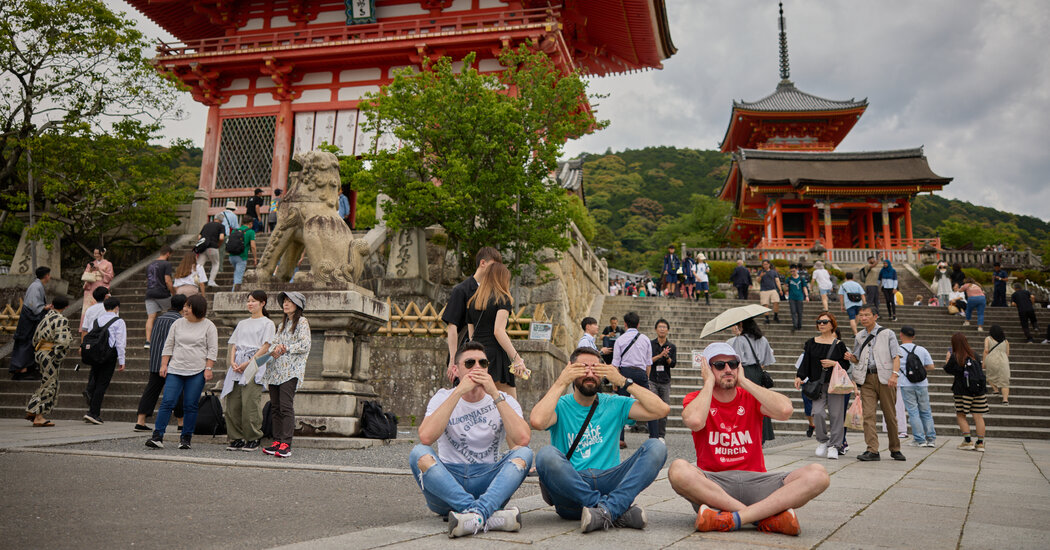On two recent occasions, a foreign tourist walked into Shoji Matsumoto’s barbershop, through a front door that grates loudly when opened more than halfway, wanting a haircut.
One was Italian, the other British. Mr. Matsumoto, who is 75 and speaks neither of their languages, didn’t know what to tell them. He picked up his scissors and began to cut, hoping that his decades of experience would carry him through the stilted encounters.
Tourists, propelled in part by a weak yen that makes their money go further in Japan, have been pouring into the country ever since it eased its coronavirus-related entry restrictions in 2022. Some officials, including Prime Minister Fumio Kishida, have raised concerns about overtourism. In March, there were more than three million international arrivals, a monthly record, and a more than 10 percent jump compared with March 2019.
Nearly two thirds of international visitors tend to be from South Korea, Taiwan and China. Last year, spending from foreign tourists made up about 9 percent of Japan’s gross domestic product.
Popular sites in cities like Kyoto, Japan’s ancient royal capital, feel increasingly unmanageable. Visitors are spilling into previously untouristed places, like small towns near Mount Fuji or the commercial district of Kyoto where Mr. Matsumoto cuts hair.
“Before, it was normal to see tourists in certain spots,” Mr. Matsumoto said from a low chair in his barbershop on a recent Saturday. “But now, they’re spreading out to random and unexpected places.”
That influx is testing the patience of a generally polite society.
In Kyoto and other heavily visited cities, some residents grumble about being priced out of hotel rooms or crowded out of buses and restaurants. Others say that tourists sometimes disrespect local customs by, say, chasing after geishas to photograph them or eating while walking, a behavior that is considered rude in Japan.
One day last month, it took Hiroshi Ban six hours — twice as long as usual — to visit Kyoto’s Heian Jingu shrine. Mr. Ban, 65, attributed the delaypartly to tourists who hold up buses by counting out coins for the fare.
“Every day feels like a carnival here,” said Mr. Ban, an event organizer. “We can’t enjoy our daily lives in peace.”
Even those who directly benefit from tourism revenue worry that it might be unsustainable.
Hisashi Kobayashi, a taxi driver in Kyoto, said business was so good that taking a day off felt like passing up easy money. But many…
Click Here to Read the Full Original Article at NYT > Travel…
